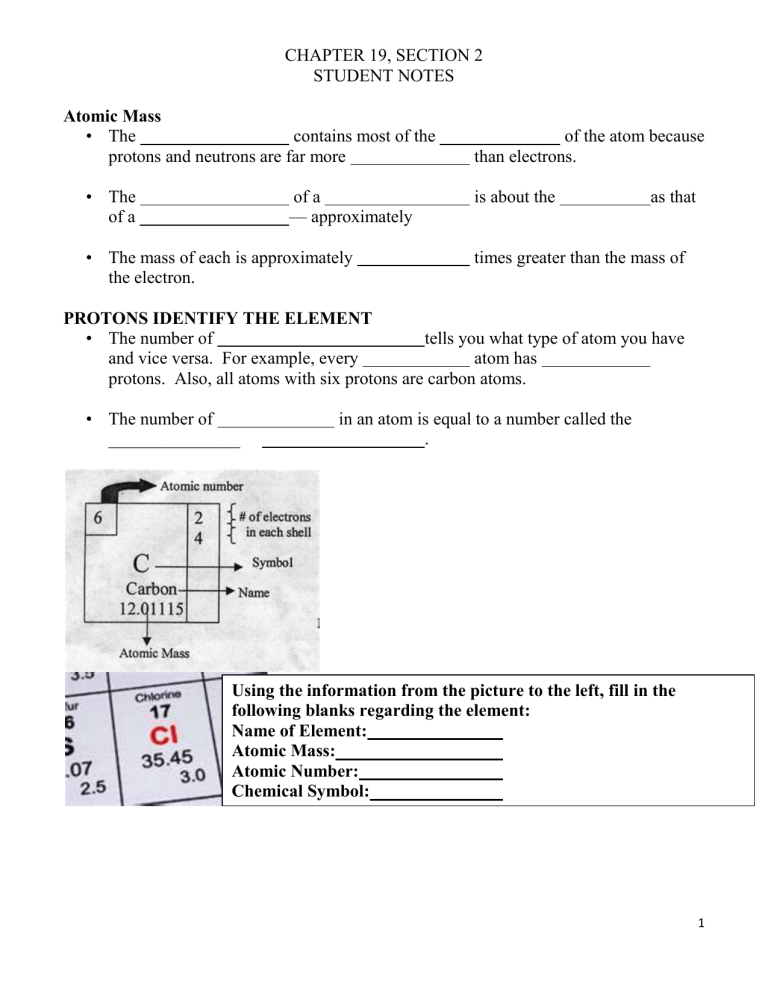Ch 19 section 2 notes template
advertisement

CHAPTER 19, SECTION 2 STUDENT NOTES Atomic Mass • The contains most of the protons and neutrons are far more • The of a of a — approximately • The mass of each is approximately the electron. of the atom because than electrons. is about the as that times greater than the mass of PROTONS IDENTIFY THE ELEMENT • The number of tells you what type of atom you have and vice versa. For example, every atom has protons. Also, all atoms with six protons are carbon atoms. • The number of _______________ in an atom is equal to a number called the . Using the information from the picture to the left, fill in the following blanks regarding the element: Name of Element: Atomic Mass: Atomic Number: Chemical Symbol: 1 Mass Number • The number of nucleus of an atom. of an atom is the and the number of of the in the • If you know the mass number and the atomic number of an atom, you can calculate the number of . • number of neutrons = number – Isotopes • Not all the atoms of an element have the same number of number . • Atoms of the same element that have different numbers of neutrons are called ________________________. • Models of two isotopes of neutrons in the isotopes are also different. are shown. Because the numbers of , the numbers are • You use the name of the followed by the mass number of the _______________________ to identify each isotope: boron-10 and boron-11. TIME TO THINK!!!! If an atom of Carbon has 6 protons and 6 neutrons and is written as Carbon-12, How many protons and neutrons does Carbon-14 have? • Protons in carbon 14 • Neutrons in carbon 14 - 2 • The the isotopes. -average mass of the • For example, out of boron-11, and one out of five is boron-10. of an element is of its atoms of boron are • To find the weighted-average or the of boron, you would solve the following equation: 3





